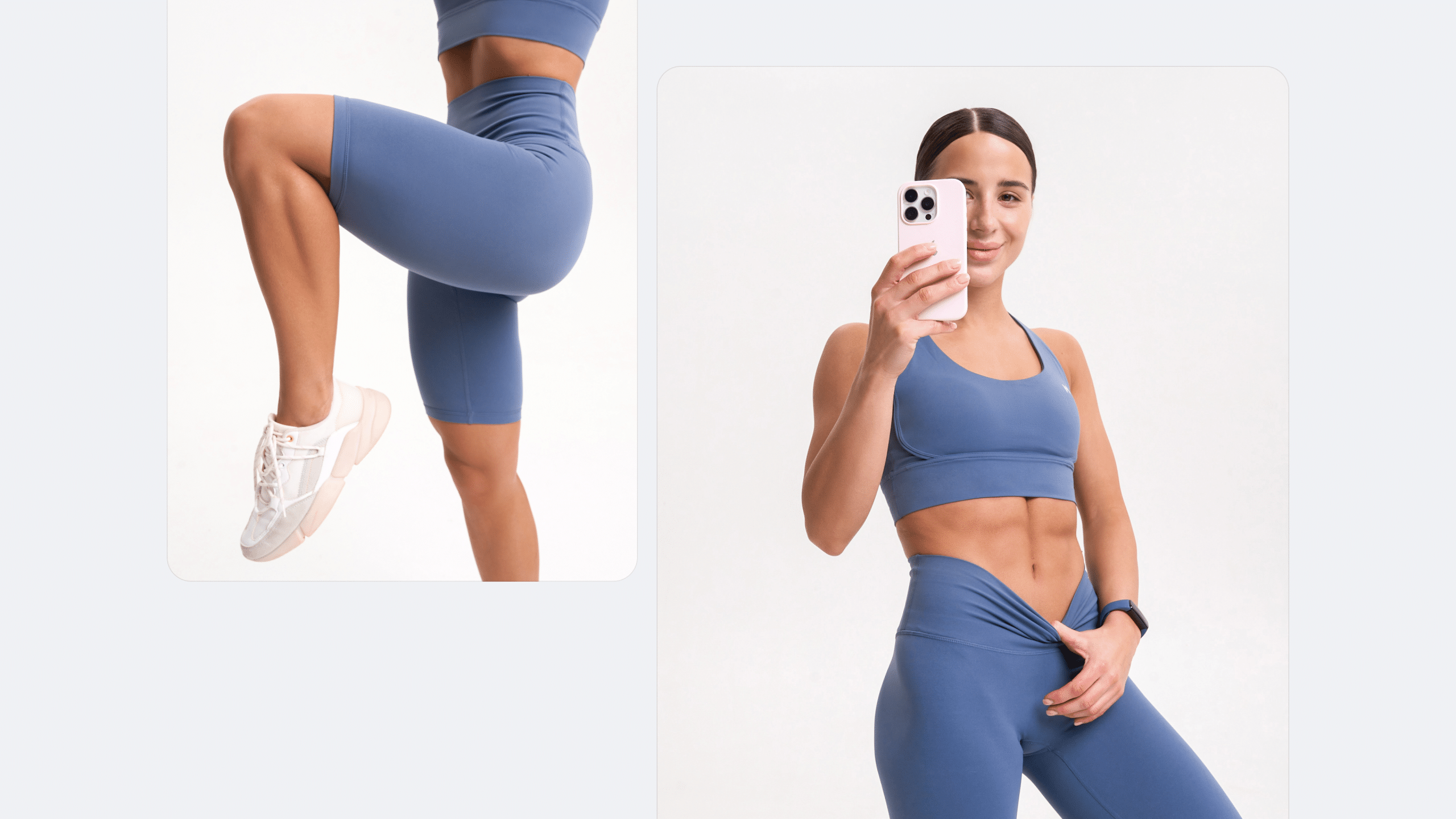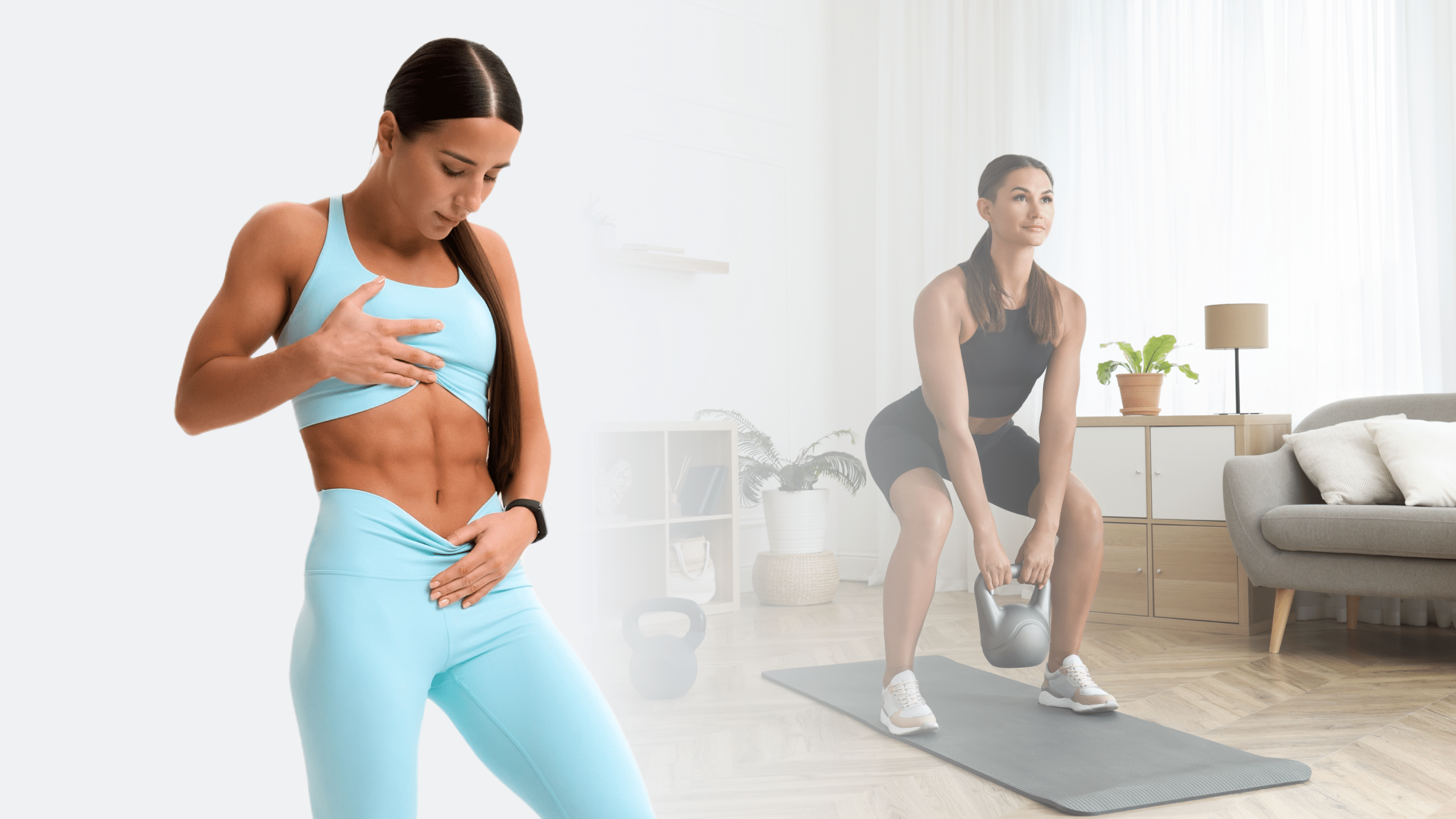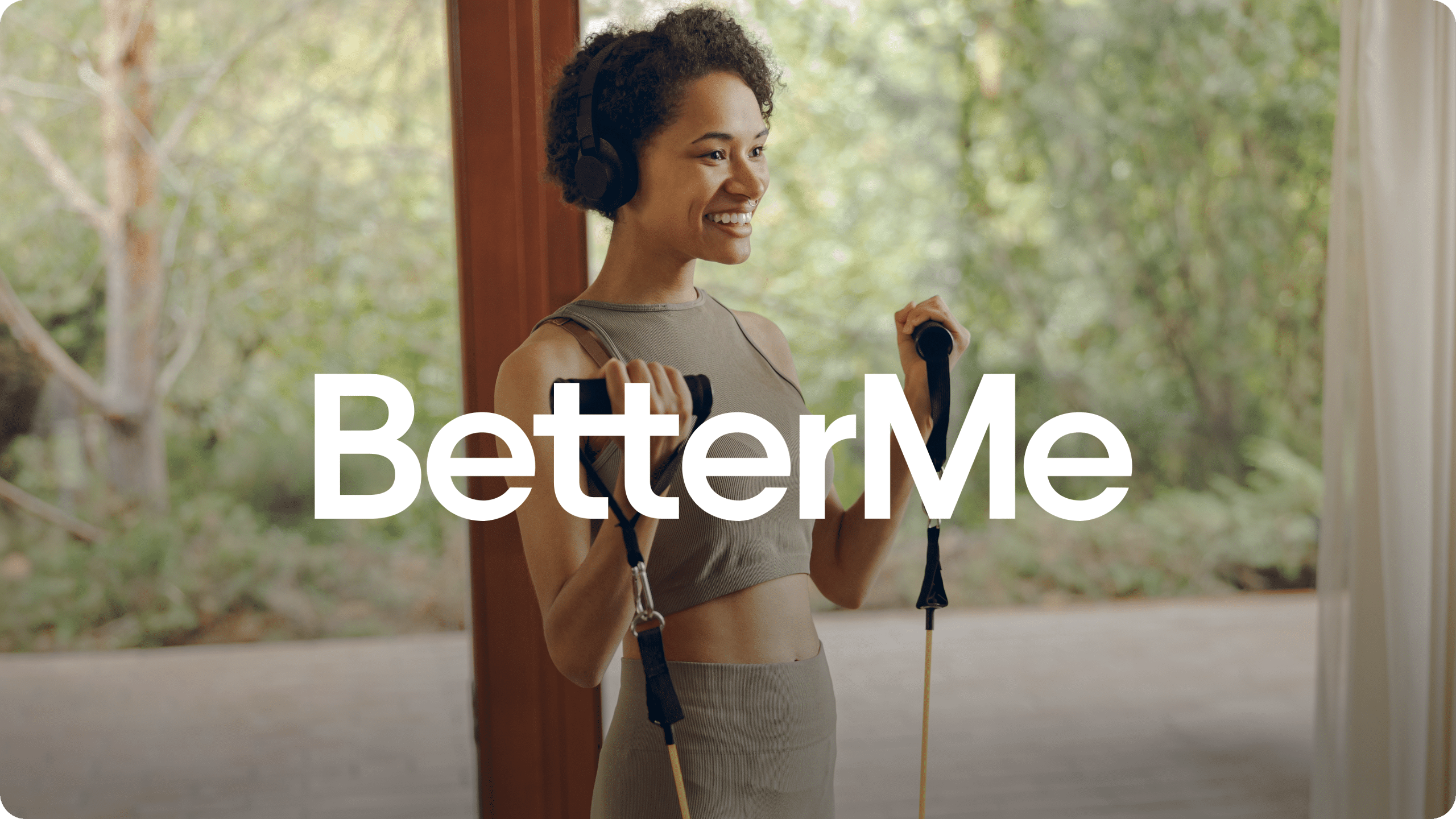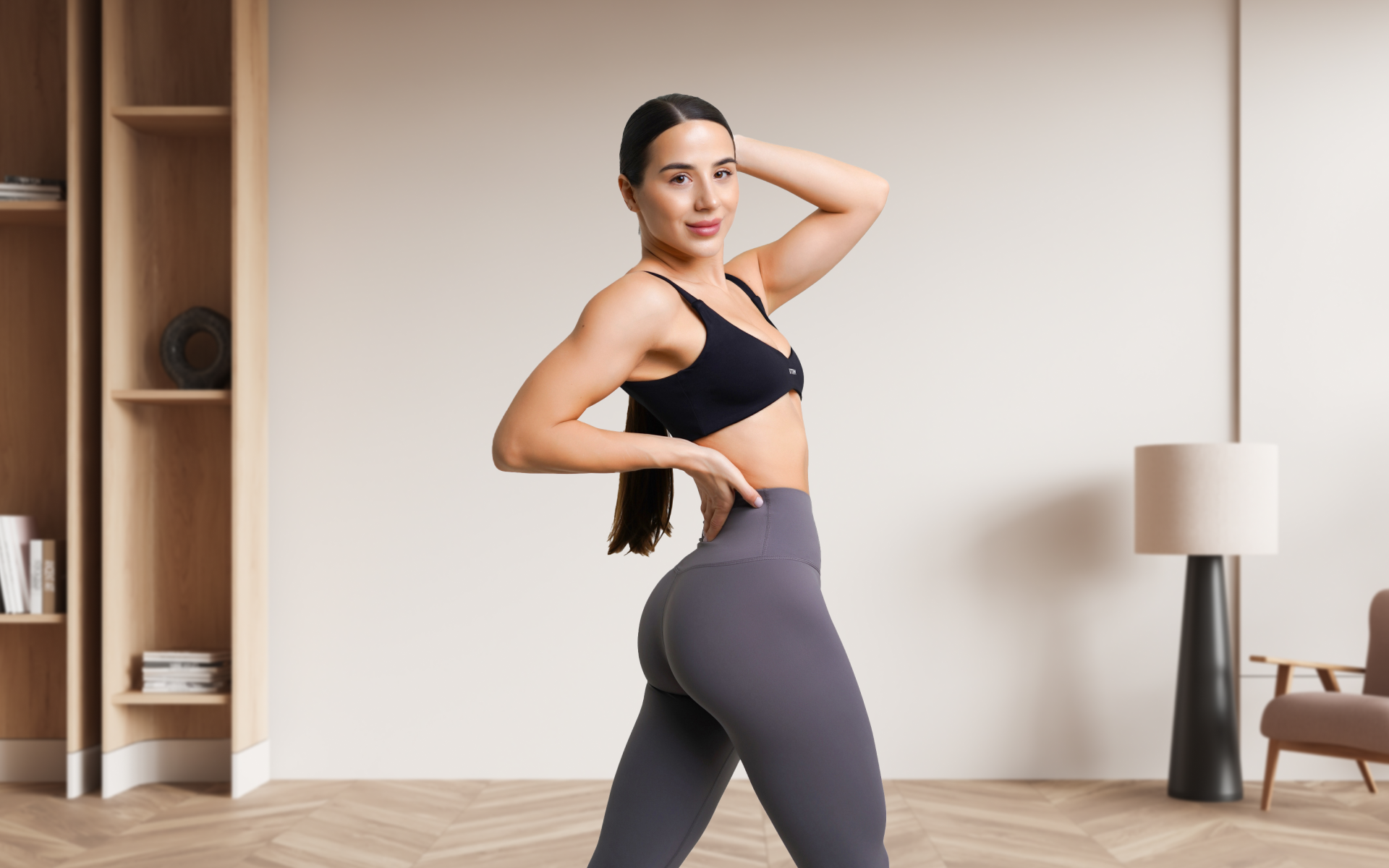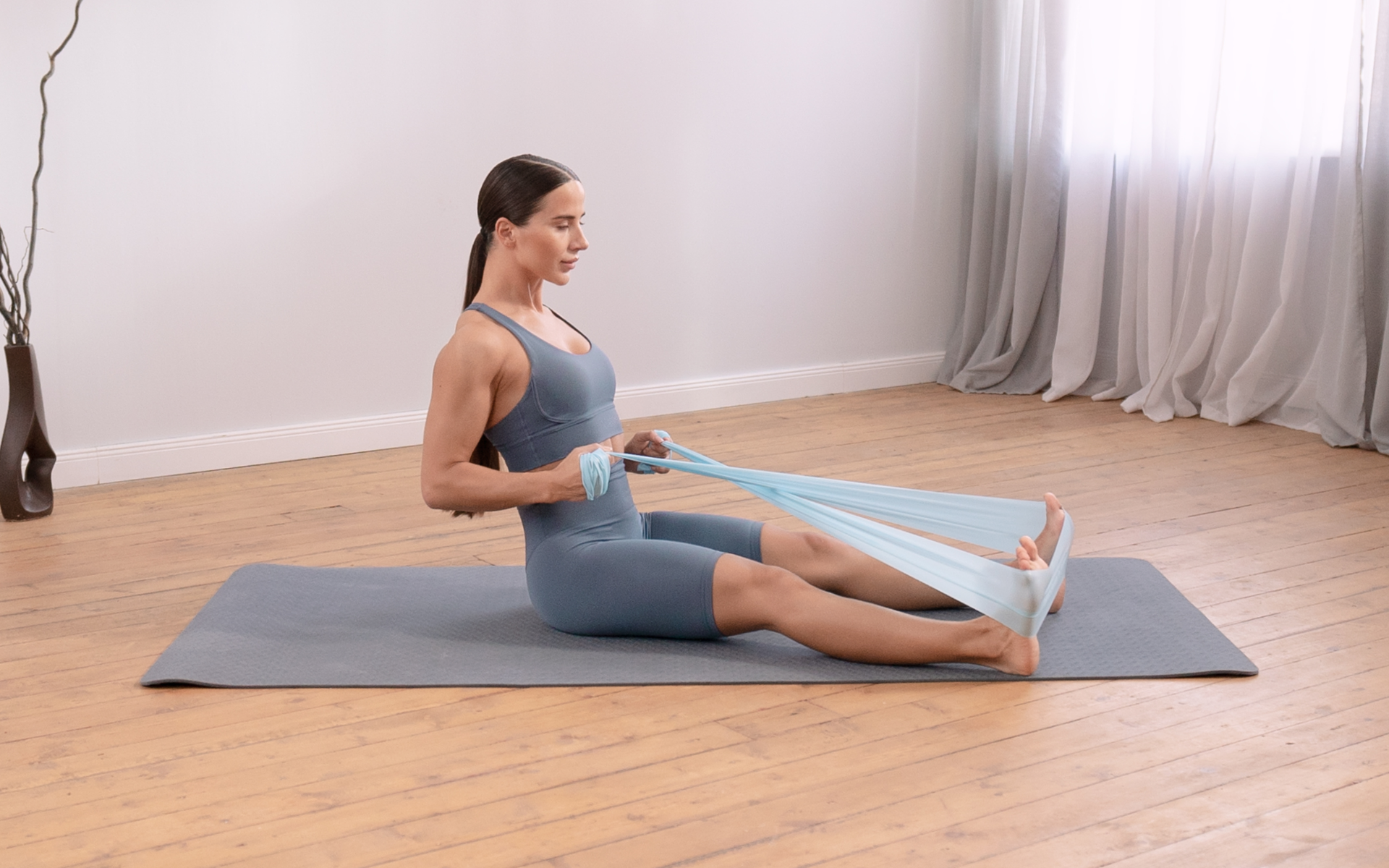Starting calisthenics as a beginner might seem daunting, especially if you find yourself comparing your current fitness and body shape to gymnasts. Wondering whether or not you can achieve a lean yet ripped body is understandable. With this in mind, how can you start calisthenics as a complete novice?
Fortunately, this complete starting calisthenics guide will show you when to start, how often to work out, and some quick benefits. Discover how to start calisthenics easily as a beginner with our comprehensive guide with steps, tips, and a fast no-equipment workout.
What Is the Best Way to Start Calisthenics?
Starting calisthenics is easy with our starting calisthenics steps and tips:
- Plan and dedicate yourself to a consistent workout routine (10)
- Incorporate a healthy and balanced diet into your workout program (3, 22)
- Start with beginner calisthenics to improve your form and technique (6)
- Follow expert recommendations for sets and reps for your best workout (9)
- Progress calisthenics workouts once you hit a plateau (2, 5, 10)
- Join a program or social calisthenics group for support and motivation (17)
Still, let’s dig deeper into the best way to start calisthenics to give you every tool necessary.
How to Start Calisthenics As a Beginner
Knowing how to start calisthenics at home may eventually lead to achieving the physique you’ve dreamed of. Let’s cover the basics before sharing the steps and tips to start calisthenics at home as a beginner.
Discover the science behind the intro to calisthenics weight loss in one of our earlier articles.
Can I Get Fit With Just Calisthenics?
What is a fit calisthenics body? Ideally, you’ll be healthier and reduce the risk of preventable diseases. The American Heart Association states that you could reduce your risk of heart disease by 14% from doing medium-intensity exercises for 2.5 hours weekly (12).
Additionally, you could reduce the risk of hypertension, diabetes, and obesity with any amount of exercise if you were previously inactive (11). You could also improve flexibility, range of motion, neuromuscular function (balance and coordination), postural control, and strength (4, 19, 20).
You can get fit with just calisthenics, while higher intensity, heart-pumping calisthenics could also help you lose weight (18). Along the way, you’ll also gain functional strength (5).
BetterMe: Health Coaching app helps you achieve your body goals with ease and efficiency by helping to choose proper meal plans and effective workouts. Start using our app and you will see good results in a short time.
Starting Calisthenics Guide: Can You Self-Learn Calisthenics?
Calisthenics is an excellent choice for beginners looking to become physically active. This form of exercise includes fundamental bodyweight movements such as pushups, pullups, squats, lunges, and more, which have been practiced for many years.
Proper form and technique are essential to avoid injury and compensatory movement patterns. While learning correct form for the basic movement patterns can certainly be done on your own using free resources such as videos and training apps, many find it very useful to seek the guidance of a trained professional that can provide individual feedback from an external point of view.
If seeking a certified trainer is not feasible for you, working out with a friend or a group can provide positive effects as well, and allows you to receive external feedback on your technique. A small study at the University of Texas found that social support helped individuals stick to their weight loss goals better (17).
How Long Should a Beginner Do Calisthenics?
The amount of time you spend working out as a beginner will typically be less than that of someone with extensive experience. For untrained individuals, an ideal training stimulus will be achieved with relatively low volume. On that same note, overtraining will be reached earlier than for a trained individual. In addition, it may be more difficult to recognize the signs since a beginner does not have anything to compare it with.
For these reasons, it is advisable to begin slower than you think you need to when you are just getting into calisthenics. Focusing on 2-3 sets of 3-4 exercises is plenty if you are untrained. Stick to basic movement patterns and regress to simpler versions of those movement patterns if necessary. For instance, if you are unable to perform a standard pushup with proper form, don’t be afraid to swap it out with a countertop pushup. This option will work the same muscles without requiring you to move your full bodyweight.
Using repetition ranges between 6 and 12 reps for each exercise with 30-120 seconds of rest between each exercise is often effective for beginners, and keeps the workout structure simple (9). With these tips in mind, a great beginner workout does not need to take more than 20-30 minutes.
What Is the Best Age to Start Calisthenics?
Starting calisthenics at 40 or joining a program at 22 isn’t much different. Calisthenics is a strength training activity that uses your body as resistance. The Mayo Clinic suggests that children as young as 7-8 can start with a basic calisthenics workout and strength training (15).
That said, discuss any workout plan with a healthcare provider, whether for children or adults. Most people reach their maximum muscle mass around 30 years of age and start to lose muscle mass by as much as 3-5% per decade after 30 (7). However, researchers point out that this can be slowed or mitigated through consistent strength training and proper diet. This preservation of muscle mass is a vital component to long term function and independence.
No age can be considered the undisputed best age to start calisthenics. Children can safely do calisthenics under supervision and without weights (15). Adults can incorporate weight training and calisthenics. The sooner in your life you incorporate regular physical activity, the better!
Whether you’re a workout beast or just a beginner making your first foray into the world of fitness and dieting – BetterMe has a lot to offer to both newbies and experts! Install the app and experience the versatility first-hand!
How Should a Beginner Start Calisthenics? (Tips/Steps)
Discover the steps you need to start calisthenics as a beginner. Start slow and work your way toward progression, even using assisted exercises in the beginning, to ensure proper form and technique while you hone your calisthenics skills with time.
Step 1 – Plan a Beginner’s Calisthenics Workout Routine
Consistent dedication is your best calisthenics workout routine planning tool. In fact, long-term consistency is the most important factor for success in any form of exercise program or skill.
Start by creating a plan to workout 2-3 days per week, making sure there is at least one day of rest between workout days. As a beginner, it is typically effective to use 2-3 full body workouts vs using a body region split, though there is nothing wrong with using a split if you prefer it. Just make sure you are covering all major muscle groups in a fairly equal manner over the course of the week. Many calisthenics exercises involve many muscle groups working simultaneously, which makes full body workouts easy to plan.
For example, a plank is often thought of as a core exercise, but it also requires significant muscle activation from the deltoids and hip flexors. There is no definitive evidence that shows split workouts are better than full-body workouts or vice versa (13, 1).
Starting calisthenics 2-3 times weekly is ideal for muscle recovery every second day. A systematic review found that consistent muscle training twice weekly improved muscle strength and hypertrophy (10). Commit to the calisthenics routine for a dedicated workout plan and eat a balanced diet to support your calisthenics body-reshaping efforts as part of step two.
Step 2 – Optimal Nutrition for Calisthenics Beginners
Proper nutrition is crucial for achieving a lean and defined physique through calisthenics. Research from the University of New South Wales suggests that strength training can lead to similar fat loss to aerobic training (14). This, of course, assumes a proper diet is followed.
Consuming ample lean protein is essential to support muscle repair and hypertrophy during your training progression (3). While the Recommended Dietary Allowance (RDA) of protein intake per day for sedentary individuals is 0.8 grams per kilogram of bodyweight, active individuals should consume more. Lightly active individuals engaging is low intensity exercise 1-3 days per week should aim for 1.0-1.2 grams of protein per kilogram of bodyweight per day, moderately active people who participate in moderate intensity exercise 3-5 days per week should aim for 1.2-1.6 grams per kilogram of bodyweight, and very active individuals who workout with high intensity 6-7 days of the week should try to consume 1.6-2.0 grams per kilogram of bodyweight (23). The Mayo Clinic also advises incorporating fruits, vegetables, whole grains, healthy fats, fat-free dairy, and unprocessed foods into your diet (22).
Step 3 – Choose Beginner Calisthenics Exercises
Developing a baseline level of fitness before progressing is key for avoiding injury and building upon your skills. To do this, you need to make sure you have the basic movement patterns mastered. The basic calisthenic movement patterns, and some of the basic associated exercises for each, are as follows:
- Squat – bodyweight squat, box squat, sit to stand
- Hinge – Good mornings exercise
- Push (horizontal and vertical) – pushups, pike pushups
- Pull (horizontal and vertical) – pullups, chinups, inverted rows
- Axial Rotation – Russian twists, bicycle crunches
Step 4 – Follow a Beginner Calisthenics Workout – No Equipment
Now that you have a plan in place for your weekly workout structure, your diet is on point, and you have the basic movement patterns selected, it’s time to begin putting your plan in motion! As discussed earlier, keep your workouts simple and relatively short to begin with. Choose 3-4 exercises and perform 2-3 sets of each with 60-90 seconds of rest between each set. If you need more rest than that between sets, take it! The main goal in these early stages is getting a baseline level of fitness and mastering the basic movement patterns.
Read more: Calisthenics Equipment for Home: Your Ultimate Guide to Building the Perfect Gym
Here is an example of a total body beginner calisthenics workout:
- Bodyweight Squat
- 2 sets of 8 reps
- Kneeling Pushups
- 2 sets of 10 reps
- Assisted Pullups
- 2 sets of 6 reps
This may feel almost too simple when you’re just getting started, but you will likely be met with noticeable delayed onset muscle soreness (DOMS) for the next 24-72 hours as your body adapts to the new stimulus.
This workout includes all compound movements that will target the lower body, pushing muscles, and pulling muscles, while incorporating core stability into the kneeling pushups as an added bonus. Remember to take adequate rest time between sets, and incorporate a 5-10 minute dynamic warmup prior to the workout, as well as 5-10 minutes of stretching or a light cooldown after.
If you’re curious about the 4 best core exercises for beginners, check out our earlier article.
Step 5 – Calisthenics Workout Plan Progression
Once you have a solid baseline level of fitness and you’ve mastered the basics, you’re ready to progress to bigger and better things. No matter how challenging an exercise is, remember that it is just a variation (and possibly a combination) of the basic movement patterns that you learned in the beginning.
It’s important not to do too much too soon. All progressions, whether they be for sets, repetitions, duration, difficulty of exercises, or training structure should be made slowly and methodically. It is far better to err on the side of progressing a little too slow than to add too much too quickly and risk injury or burnout.
An example of a progression of pushup may look like this:
- Wall Pushup
- Countertop Pushup
- Step Pushup
- Kneeling Pushup
- Standard Pushup
- Decline Pushup
- Archer Pushup
- Diamond Pushup
- Plyometric Pushup
- Single Arm Pushup
Note that there can be multiple smaller progressions along the way as well. Never be afraid to regress your plan if necessary for any reason.
Join a Beginner Calisthenics Program
For some, joining a calisthenics program gives them the push they need to stay motivated and achieve the body of their dreams. Our app gives you personalized workout plans and accountability. Try our 28-day calisthenics workout challenge to remain accountable and enjoy the benefits with other beginners (16).
Social support and accountability may help you stick to your fitness or weight loss goals (17). Motivate yourself by joining a calisthenics program near you, where seasoned trainers can show you the ropes. Alternatively, download our app to get started with calisthenics.
Read more: Advanced Calisthenics: 7 Exercises for Greater Gains
FAQs
Is 25 Too Old to Start Calisthenics?
Not at all! At 25, you are in your physical prime and will likely adapt quite well to a calisthenic training program, given you follow the guidelines discussed above.
Is Calisthenics Hard at First?
Unfortunately, motivation is the biggest culprit making calisthenics hard at first. Australian research shows that over 20% of obese individuals feel too ashamed and too overweight to start exercising (21). It takes time to form new habits and build functional strength (8, 5). Feeling too weak could also challenge you as a beginner with calisthenics.
Remember to keep things simple when you’re just getting started and ease into your progressions slowly.
The Bottom Line
Starting calisthenics as a beginner can feel daunting, but by following the steps outlined in this guide, you can create an effective workout routine. Remember to maintain a healthy diet, progress steadily, and keep it fun.
With dedication and consistency, you’ll see improvements in your strength and fitness. Begin your calisthenics journey today and embrace the benefits of this versatile and accessible form of exercise.
DISCLAIMER:
This article is intended for general informational purposes only and does not serve to address individual circumstances. It is not a substitute for professional advice or help and should not be relied on for making any kind of decision-making. Any action taken as a direct or indirect result of the information in this article is entirely at your own risk and is your sole responsibility.
BetterMe, its content staff, and its medical advisors accept no responsibility for inaccuracies, errors, misstatements, inconsistencies, or omissions and specifically disclaim any liability, loss or risk, personal, professional or otherwise, which may be incurred as a consequence, directly or indirectly, of the use and/or application of any content.
You should always seek the advice of your physician or other qualified health provider with any questions you may have regarding a medical condition or your specific situation. Never disregard professional medical advice or delay seeking it because of BetterMe content. If you suspect or think you may have a medical emergency, call your doctor.
SOURCES:
- A Randomized Trial on the Efficacy of Split-Body Versus Full-Body Resistance Training in Non-Resistance Trained Women (2022, bmcsportsscimedrehabil.biomedcentral.com)
- A Subject-Tailored Variability-Based Platform for Overcoming the Plateau Effect in Sports Training: A Narrative Review (2022, ncbi.nlm.nih.gov)
- Dietary Protein and Muscle Mass: Translating Science to Application and Health Benefit (2019, ncbi.nlm.nih.gov)
- Effect of Calisthenics Workouts for Weight Loss and Flexibility (2019, journalofsports.com)
- Effect of Progressive Calisthenic Push-up Training on Muscle Strength and Thickness (2018, pubmed.ncbi.nlm.nih.gov)
- Exercise Biomechanics for Health: Evaluating Lifelong Activities for Well-Being (2023, ncbi.nlm.nih.gov)
- Preserve Your Muscle Mass – Harvard Health (2016, health.harvard.edu)
- Protocol for Minute Calisthenics: A Randomized Controlled Study of a Daily, Habit-Based, Bodyweight Resistance Training Program (2020, ncbi.nlm.nih.gov)
- Resistance Training By the Numbers – Harvard Health (2021, health.harvard.edu)
- Resistance Training Prescription for Muscle Strength and Hypertrophy in Healthy Adults: A Systematic Review and Bayesian Network Meta-Analysis (2023, bjsm.bmj.com)
- Some Exercise Is Better Than None – Faculty of Health and Behavioral Sciences (2020, habs.uq.edu.au)
- Some Exercise Is Better Than None: More Is Better to Reduce Heart Disease Risk (2011, sciencedaily.com)
- Split or Full-Body Workout Routine: Which Is Best to Increase Muscle Strength and Hypertrophy? (2021, ncbi.nlm.nih.gov)
- Strength Training Can Burn Fat Too, Myth-Busting Study Finds (2021, sciencedaily.com)
- Strength Training: OK for Kids? – Mayo Clinic (2023, mayoclinic.org)
- The 28-Day Calisthenics Workout Challenge To Improve Your Fitness (2024, betterme.world)
- The Assessment of Supportive Accountability in Adults Seeking Obesity Treatment: Psychometric Validation Study (2020, ncbi.nlm.nih.gov)
- The Effect of 12-Week Calisthenics Exercise on Physical Fitness among Obese Female Students (2022, tmfv.com.ua)
- The Effect of Breaking Up Sedentary Time with Calisthenics on Neuromuscular Function: A Preliminary Study (2022, ncbi.nlm.nih.gov)
- The Effects of a Calisthenics Training Intervention on Posture, Strength, and Body Composition (2017, researchgate.net)
- Too Fat to Exercise? Obesity as a Barrier to Physical Activity (2000, pubmed.ncbi.nlm.nih.gov)
- Weight Loss: 6 Strategies for Success – Mayo Clinic (2024, mayoclinic.org)
- How to calculate your required protein intake and where to get it (2021, medicalnewstoday.com)


